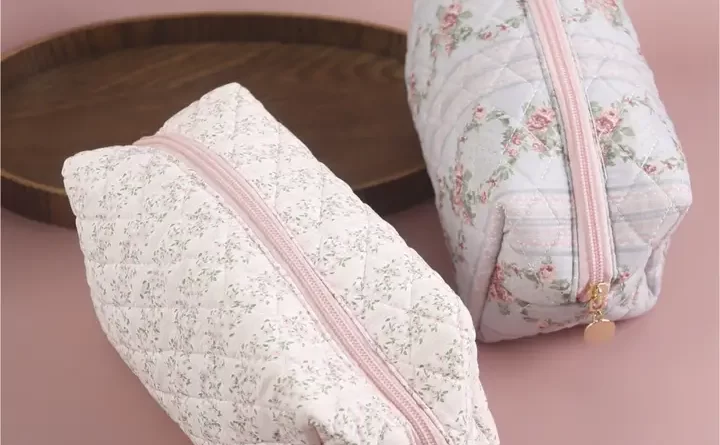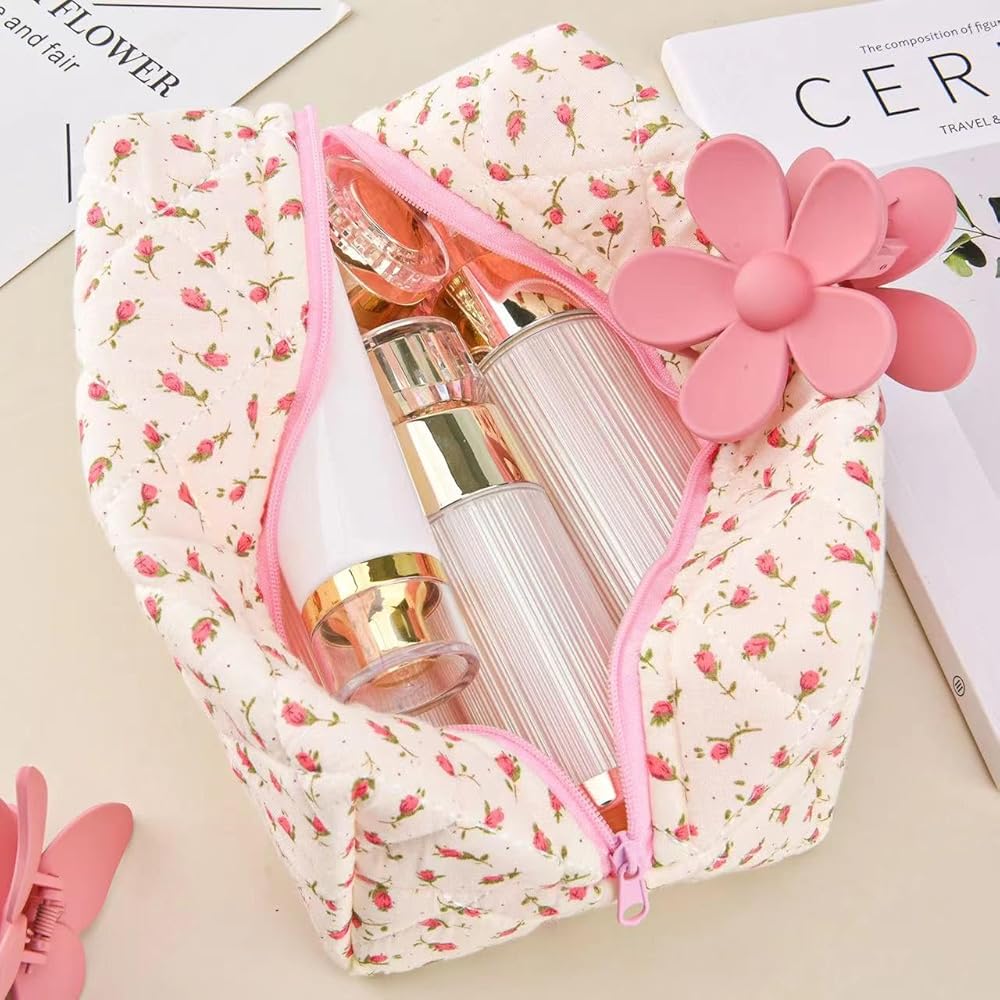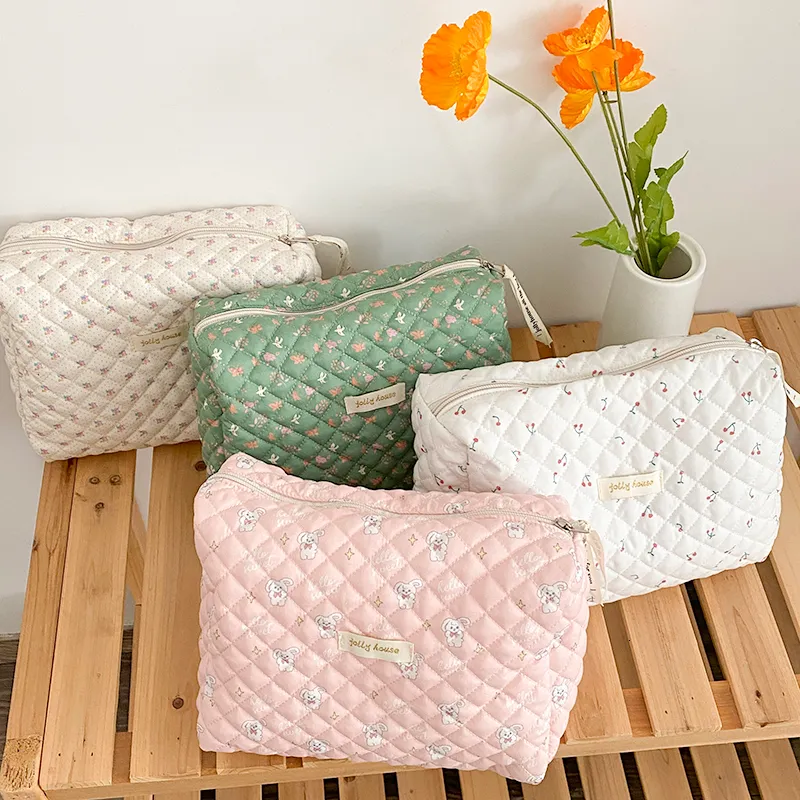Your Own Makeup Bag Sewing Pattern: A Step-by-Step Guide
Introduction to DIY Makeup Bags
Embarking on a DIY project can be exciting, especially when creating something both functional and stylish. A makeup bag is a perfect example of such an endeavor. Sewing your own makeup bag allows for customization and personal expression. With the right makeup bag sewing pattern, you can create a unique piece that’s tailored to your needs and taste.
Why choose DIY over store-bought? The answer is simple. Making your own makeup bag means you can pick the size, fabric, and design to match your style. Plus, it’s a great way to hone your sewing skills. From selecting the proper materials to adding the final touches, each step in the process is a rewarding experience.
Whether you’re a sewing novice or a seasoned pro, crafting a makeup bag is a practical and satisfying project. We’ll guide you through the journey, from gathering your materials to showing off your finished product. So, prepare to get creative and dive into the world of DIY makeup bags!
Essential Materials Needed for Sewing a Makeup Bag
Before you start creating your custom makeup bag, you’ll need to gather some essential materials. Assembling your supplies beforehand will ensure that your sewing project goes smoothly. Here’s what you’ll need for your makeup bag sewing pattern:
- Fabric: Choose fabric that matches your style and durability needs. Cotton and nylon are popular choices.
- Lining Material: Select a lining to protect the inside of your makeup bag. Waterproof linings are practical.
- Sewing Machine: A basic sewing machine is necessary for stitching the pieces together.
- Thread: Ensure that your thread color complements or matches your fabric.
- Scissors: A good pair of scissors will make cutting your fabric and lining easier.
- Pins: Pins will help hold your fabric pieces in place while you sew.
- Measuring Tape: Accurately measure your fabric to follow the makeup bag sewing pattern.
- Zipper: Depending on your design, choose a zipper that fits the size of your makeup bag.
- Iron and Ironing Board: Pressing your fabric is key to a professional-looking finish.
Gather these materials, and you’ll be ready to move on to the next steps of choosing your fabric and cutting your pattern. Remember, the quality of your materials can greatly affect the outcome of your makeup bag.
Choosing the Right Fabric for Your Makeup Bag
When selecting a fabric for your makeup bag sewing pattern, consider both style and function. Start by thinking about how you’ll use your bag. Will it travel with you, or stay at home? This choice impacts which fabric works best.
Durability is Key
Opt for durable fabrics if you’re always on the go. Canvas, leather, and thick cotton can withstand frequent use. These materials resist wear and tear, keeping your bag looking new longer.
Style Meets Function
Choose a fabric that reflects your personal style. Bold prints and bright colors can express your personality. But, don’t forget functionality. Darker fabrics hide stains, while lighter ones may need more cleaning.
Waterproof and Easy to Clean
For easy cleaning, pick a fabric that’s waterproof or easy to wipe down. Nylon and laminated cotton are good options. They protect against spills, making them ideal for makeup bags.
Comfort Comes First
Make sure your chosen fabric feels good to touch. You’ll be handling your bag daily, so the texture is important. Soft fabrics like velour or microfiber add a touch of luxury.
Remember, the fabric you choose is the foundation of your makeup bag. It should be a balance of style, comfort, and utility. Take your time, select carefully, and enjoy the process of making your custom bag a reality.
Cutting the Pattern and Preparing the Pieces
Once you’ve chosen the perfect fabric for your makeup bag sewing pattern, it’s time to cut and prepare the pieces. This step is crucial for a successful DIY project. Follow these guidelines to ensure precision and prepare for a seamless sewing experience.
Trace and Cut the Fabric
Lay out your chosen fabric on a flat surface. Place your makeup bag sewing pattern on top. Use a fabric marker or a chalk to trace around the pattern. Cut carefully along the lines you’ve drawn. Make sure to include any extra seam allowance specified in the pattern.
Prepare the Lining
Cut the lining material following the same size and shape as your fabric pieces. The lining adds structure and protects the contents of your bag from damage and spills.
Iron the Pieces
Before sewing, iron all the pieces flat. This step helps remove wrinkles and ensures your pieces line up correctly. It makes sewing much easier and gives your makeup bag a professional look.
Pin the Pieces Together
With right sides together, pin the outer fabric pieces to the lining. This keeps the fabric steady and prevents slipping while you’re sewing. Make sure the pins are well placed to avoid them getting in the way of your sewing machine needle.
Check the Zipper
Ensure that the zipper you’ve chosen fits well with your cut pieces. If you haven’t done so yet, now’s the time to cut the zipper to length. Be mental and go slow to prevent mistakes.
Preparing your pieces attentively paves the way for a smooth sewing process. With everything cut, ironed, pinned, and checked, you’re ready to bring your makeup bag to life in the next steps of construction.
Step-by-Step Sewing Instructions for Your Makeup Bag
Once your pieces are ready, the sewing journey begins. Follow this guide for a smooth experience.
Set Up Your Sewing Machine
Before anything else, set up your sewing machine. Thread it with a color that matches or complements your fabric. Make sure it’s in good working order and that you have extra needles handy, just in case.
Start with the Sides
Begin by sewing the sides of your makeup bag. Place the right sides of the fabric and lining together. Sew along the marked lines, leaving a seam allowance. Remember to backstitch at the start and end to secure your work.
Attach the Bottom
After the sides, attach the bottom piece. This gives your bag shape and stability. Be careful when sewing around corners. Go slow to maintain precision.
Sew in the Zipper
The zipper is next. Pin the zipper to the fabric edges, making sure it lines up properly. Use a zipper foot on your sewing machine for this step. Sew close to the zipper teeth for a clean look.
Inside Out
Once the zipper is in place, turn your makeup bag inside out. This reveals your bag’s final appearance. Smooth out the corners and edges with your fingers or a blunt instrument.
Final Seams
The final step is sewing the inside seams. Turn the bag back to the wrong side. Sew the inside edges, securing the lining to the outer fabric. Avoid catching the zipper in your seams.
Trim and Finish
Trim any excess threads and check all seams are secure. Turn your makeup bag right side out one last time. Iron it if needed to create a perfect final shape.
Follow these steps carefully, and your handmade makeup bag will not only look fantastic but will also be sturdy and functional.
Customizing Your Makeup Bag with Pockets and Dividers
When crafting your makeup bag sewing pattern, think about organization. Adding pockets and dividers can help keep your items sorted. Here’s how to add these features for a more functional makeup bag.
Decide on the Number and Size of Pockets
Start by deciding how many pockets you need. Think about the items you carry. Do you need several small pockets or just a few large ones? Measure your items and plan pocket sizes accordingly.
Choose the Placement of Your Pockets
Place pockets where they make sense for you. Common choices include inside the bag or on the outer sides. Remember to consider ease of access when choosing their placement.
Cut Extra Pieces for Pockets and Dividers
Cut additional fabric pieces for each pocket or divider. Use the same or a contrasting fabric to add style. Be sure these pieces match your desired size and shape.
Sew Pockets Before Assembling the Bag
Sew your pockets onto the chosen fabric piece before assembling the bag. Pin them in place first to avoid shifting. Sew around the edges leaving the top open.
Add Dividers with Stitching
To create dividers, sew straight lines where you want them inside the bag. Use a ruler to ensure they’re straight. Stitch from the bottom of the bag up to the desired height.
Consider Adding Elastic or Velcro
For adjustable dividers or secure pockets, use elastic or Velcro. These materials hold items firmly and can adapt to different sizes.
Adding pockets and dividers increases your makeup bag’s functionality. Plan these features early in the design process. They will turn a simple pouch into a personalized carrier for your makeup essentials.
Adding Zippers and Closures to Your Makeup Bag
Zippers are not just functional; they also add a stylish element to your makeup bag sewing pattern. To add zippers and closures effectively, follow these simple steps:
Choose the Right Zipper
Select a zipper that complements the fabric of your makeup bag. For durability, metal zippers are ideal, while nylon zippers provide a smoother closure.
Measure and Cut the Zipper
Ensure the zipper length matches the opening of your bag. Trim excess length if needed, taking care not to cut the pull mechanism.
Pin the Zipper in Place
Align the zipper teeth with the fabric edge. Secure it with pins before sewing to prevent slipping.
Sew the Zipper
Using a zipper foot, stitch close to the teeth. Backstitch at both ends to reinforce the zipper.
Add a Zipper Stop
Create a zipper stop by stitching across the ends. This prevents the pull from coming off.
Choose Additional Closures
Consider magnetic snaps or Velcro for different sections of your makeup bag. These options can provide extra security and ease of access.
Attach Closures Properly
For snaps, align them carefully and ensure they are properly attached. For Velcro, sew all edges to secure it in place.
Adding zippers and closures not only secures the contents of your makeup bag but also contributes to its overall design. Be mindful of matching your fabric’s style and the zipper’s functionality for the best results.
Final Touches: Embellishments and Personalization
Your makeup bag is almost done, but it’s not quite complete without your personal touch. Embellishments and personalization turn a simple bag into a statement piece that’s uniquely yours.
Add Some Sparkle
Consider adding embellishments like sequins, beads, or embroidery to give your bag some sparkle. Pick a spot that’s visible but won’t interfere with the bag’s use.
Embroider Your Initials
Stitch your initials onto your bag for a classic, personal look. Use thread that stands out against your fabric for extra impact.
Play with Patches
Iron-on patches can add character to your makeup bag. Choose designs that reflect your interests or add some humor.
Button Up
Sewing on buttons isn’t just practical; it can also be decorative. Go for bold or vintage buttons to make a statement.
Use Fabric Paint
Get creative with fabric paint. Draw designs or write quotes that inspire you. Let your creativity shine.
Add a Charm
Attach a charm to your zipper for an easy-to-grab and chic touch. Choose something that makes you smile every time it catches your eye.
Remember, the goal is to make your makeup bag reflect who you are. Have fun with these final touches and enjoy using a bag that’s completely your own design.
Tips for Maintaining and Cleaning Your Handmade Makeup Bag
To keep your handmade makeup bag looking its best, regular cleaning and maintenance are key. Here’s a simple guide to help you take care of it:
- Empty Regularly: Make it a habit to clear out your bag often. This removes dirt and prevents stains from setting in.
- Spot Clean: As soon as you see a spot, clean it quickly. Use mild soap and water for most fabrics.
- Machine Washable Fabrics: If your makeup bag is cotton or another washable fabric, you can machine wash it. Use a gentle cycle and let it air dry.
- Not Machine Washable: For materials that can’t go in the machine, like leather, wipe them down with a damp cloth. Use a cleaner designed for that fabric.
- Mind the Liner: If you used a waterproof liner, turn the bag inside out and wipe it down. This keeps the lining fresh and free from makeup residue.
- Avoid Harsh Chemicals: Never use strong cleaners. They can harm the fabric and fade colors.
- Zipper Care: Take care of zippers by pulling them gently. If they stick, use a bit of wax or soap to make them slide easier.
- Storage: When not in use, store your makeup bag in a cool, dry place. This prevents mold and preserves the fabric.
With these tips, your makeup bag sewing pattern creation can stay as striking and functional as the day you finished it. Regular care ensures lasting beauty and use.
Conclusion: Enjoying Your Custom Makeup Bag
Congratulations on completing your DIY makeup bag! This unique piece is not just an accessory, but a personal statement of your creativity. With the makeup bag sewing pattern, you’ve transformed raw materials into a functional work of art. The time and effort you’ve put into choosing materials, cutting, sewing, and customizing have paid off. Your makeup bag is not only designed to your preferences but also serves as a badge of your sewing skills.
Every time you use your custom-made makeup bag, remember the journey you took to create it. From the very first stitch to the final embellishment, each step was a learning experience. This bag is filled with more than just your makeup; it holds the story of its making. Cherish it as a tangible reminder of what you can accomplish with patience and imagination.
To keep your makeup bag in top shape, follow the maintenance tips. Regular cleaning and careful use will keep it looking like new. It’s a showcase of your dedication, a practical asset, and most importantly, an item that carries your unique touch.
So, take pride in your handmade makeup bag. Flaunt it, use it, enjoy it, and when you’re ready for a new project, you’ll have this experience to build on. Happy sewing!



